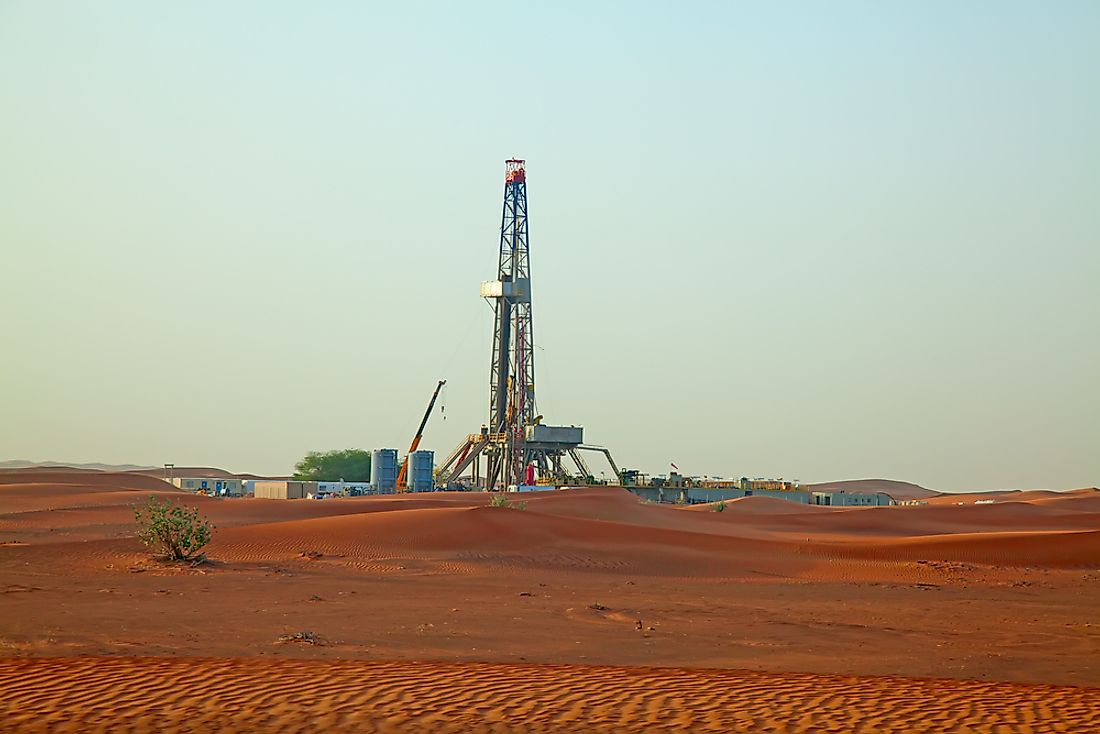What Are The Biggest Industries In The United Arab Emirates?

The UAE is a country found in West Asia, and it shares its land borders with Oman on the eastern part and Saudi Arabia to the southern part. The country also shares maritime borders with Qatar and Iran, and it is made up of 7 Emirates. Each Emirate has a ruler or Emir, who governs it, and together they form the Supreme Council, and one of the Emirs would serve as the country’s president. As of 2013, the country had a population of 9.2 million inhabitants.
Oil Industry
According to the government of the UAE, the country has oil reserves estimated to be about 98.6 3 billion barrels, and most of these are located in Abu Dhabi which is estimated to be about 92 billion barrels while Dubai has approximately 4 billion barrels, and the Emirates of Sharjah is believed to have 1.5 billion barrels. Zakum oil field contains most of the oil in the country and is the 3rd largest oil field in the Middle East hosting about 66 billion barrels of oil. The country produces an average of 2.9 billion barrels of oil every day, and the country is planning to raise oil production to 5 million barrels a day by 2030. The state-owned, Abu Dhabi National Oil Company (ADNOC) is the 12th largest company in the world and is responsible for much of the oil produced in the UAE. The company has 16 subsidiaries, and all are involved in different stages of oil production, and it works in different oil and gas fields located in offshore and onshore. ADNOC also has two major Oil refineries, which are found at Umm Al Nar and Ruwais.
Agriculture
Agriculture in UAE account for a small part of the country's economy, and as of the early 1990s, it accounted for less than 4% of the GDP. Some of the main farming areas in the country include Digdagah in Ras al-Khaimah. Other areas in Umm al Qawain, Al awir in Dubai, Wadi Adh Dhayd in Sharjah and other coastal areas around al-Fujairah like Haribo are suitable for agriculture. The total arable land in the United Arab Emirates is about 160,000 hectares. Some of the main crops cultivated in the country include date palms, which by the 1990s were about four million plants. The crops are cultivated mainly in small Oasis, and both the Emirates on the federal government provide farmers with incentives. The government gives about 50% subsidy on pesticides, seeds, and fertilizers. The government also gives loans on machinery and other technical assistance. The country has about 41 agricultural extension units and numerous other agricultural research stations and experimental farms. The number of farmers in the UAE increased from 4,000 in the 1970s to standard 18,265 in 1988. Some of the challenges facing the development of Agriculture in the country include limited arable land, occasional swarms of locusts, intense heat, and limited supplies of water
Tourism Industry
The United Arab Emirates has promoted tourism in the recent past in trying to diversify the economy of the country. Some of the attractions of tourist are mainly based on shopping, and there are other ancient and modern attractions spread across the country. In 2018, Dubai was ranked as the world’s leading most visited City by foreign tourists. In 2009, the country signed an agreement of cooperation in tourism with Lebanon, and the country has witnessed a growth in tourism ever since. In 2014, Dubai attracted about 13.2 million visitors, and most of them were particularly from the neighboring Arab States, and others were from different countries around the world. According to the tourism board of Dubai, there were 15.79 million visitors in 2017 to Dubai, and the government estimates that by 2020, the visitors to Dubai would be about 20 million people. The country has a modest dressing code which is part of the country’s criminal law, and short dresses and sleeveless tops may not be allowed in public.
Major Challenges Facing The UAE
Some of the challenges facing the United Arab Emirates include environmental issues caused by the exploitation of natural resources. Other challenges include the high cost of energy and rapid increase in population. The country has experienced high temperatures as a result of global warming, which has also increased the scarcity of water, draughts, aridity, high temperatures, and rising sea levels. The large part of the countryside is largely arid which is characterized by sparse precipitation and high temperatures which are worsened by the effects of climate change and has contributed to the worsening situation of water scarcity, quality of water, and water contamination. The country is ranked as the 29th highest emitter of carbon dioxide in the world.











